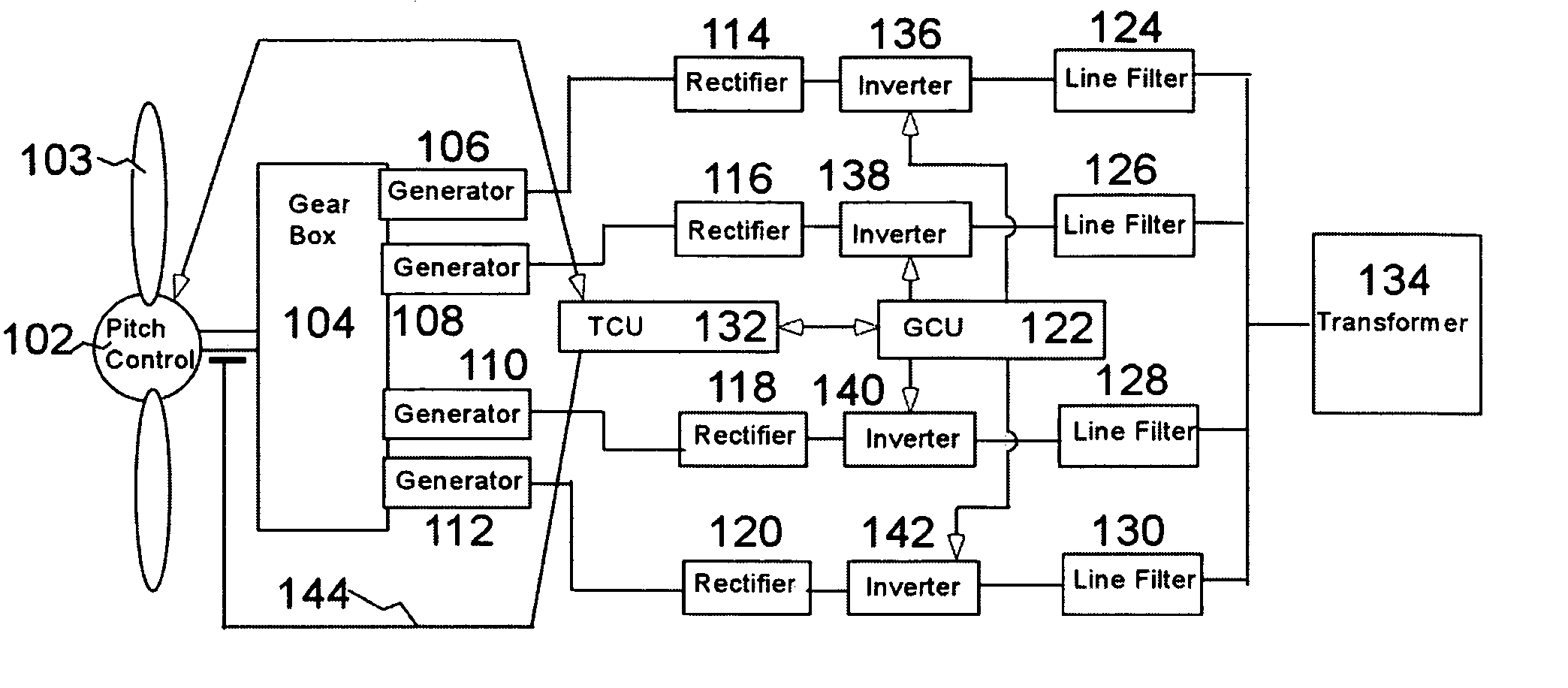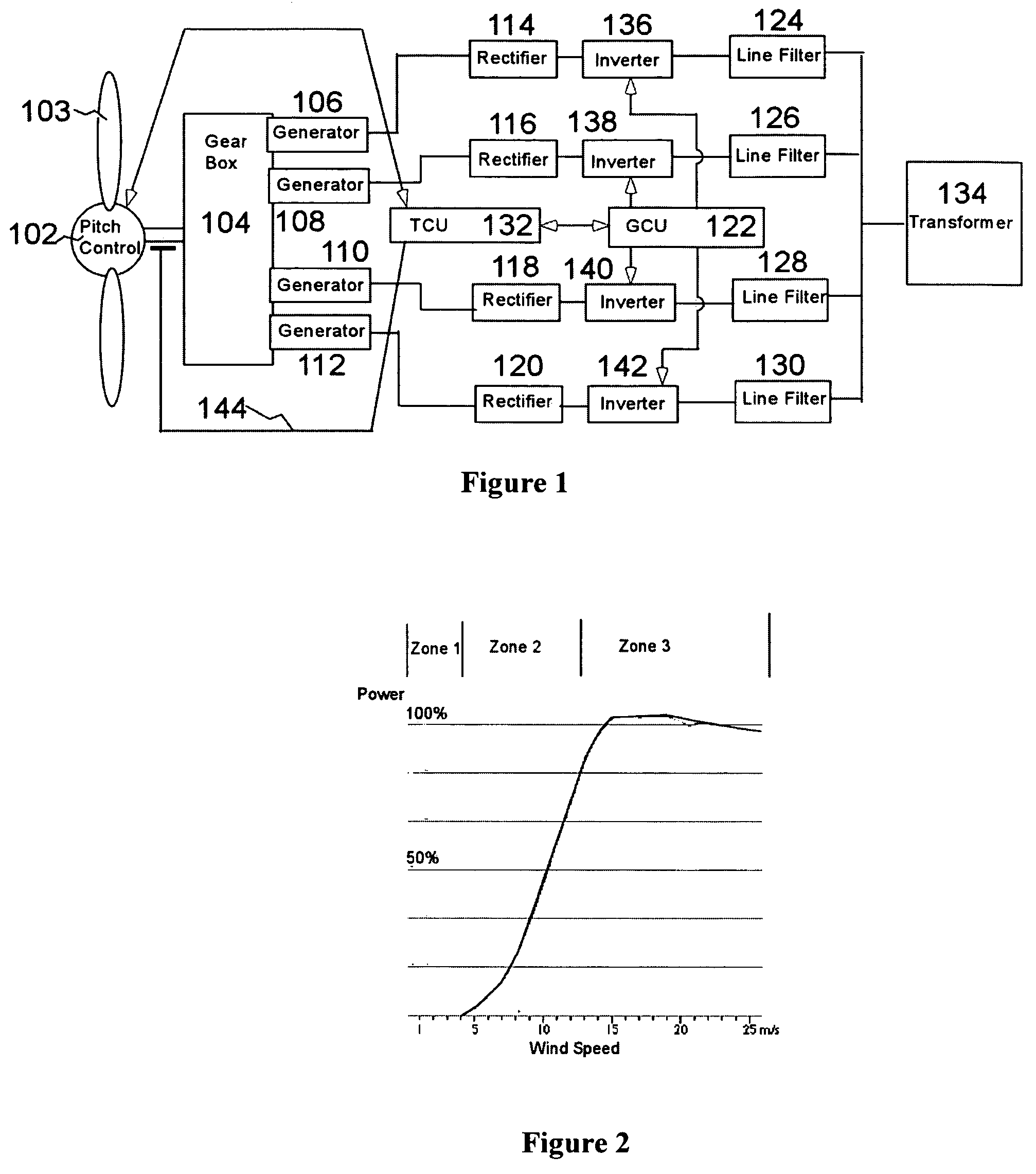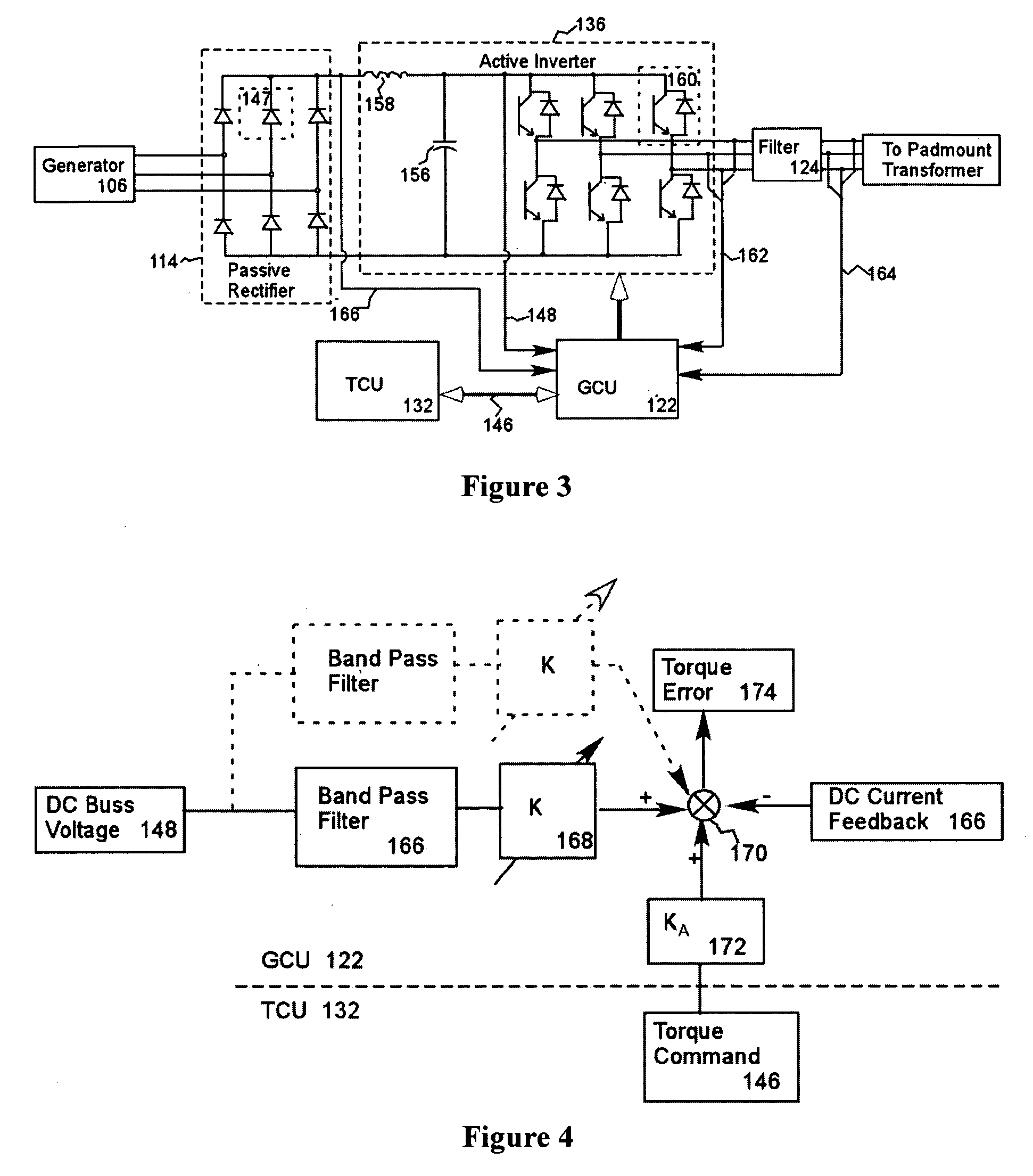Variable speed distributed drive train wind turbine system
a distributed drive and wind turbine technology, applied in the direction of electric generator control, dynamo-electric converter control, instruments, etc., can solve the problems of increasing the torque of the main shaft, the inability to respond adequately to wind gusts, and the significant impact of the cost of wind generated electricity, so as to achieve high total drive train efficiency and high efficiency. , the effect of high efficiency
- Summary
- Abstract
- Description
- Claims
- Application Information
AI Technical Summary
Benefits of technology
Problems solved by technology
Method used
Image
Examples
Embodiment Construction
[0037]The variable-speed wind-turbine generator system is broadly shown in FIG. 1. There are six basic components of the system: Firstly a turbine drive train including a rotor hub mounted pitch servo system or PCU 102, blade rotor 103, distributed generation gearbox 104 and four permanent magnet generators 106, 108, 110, 112; secondly generator rectifier units 114, 116, 118, 120; thirdly a control system comprising a generator control unit (GCU) 122 and a turbine control unit (TCU) 132; fourthly four independent inverters, 136, 138, 140, and 142; fifthly individual line filters for each converter, 124, 126, 128, 130; and sixthly a pad-mount transformer, 134. Additionally shown in FIG. 1 is a sensor for measuring turbine speed on the low speed shaft, 144. It should be noted that for the purposes of illustration a system using four independent power conversion systems including generator, filter, inverter, rectifier, etc. is illustrated herein. A turbine using a greater or smaller nu...
PUM
 Login to View More
Login to View More Abstract
Description
Claims
Application Information
 Login to View More
Login to View More - R&D
- Intellectual Property
- Life Sciences
- Materials
- Tech Scout
- Unparalleled Data Quality
- Higher Quality Content
- 60% Fewer Hallucinations
Browse by: Latest US Patents, China's latest patents, Technical Efficacy Thesaurus, Application Domain, Technology Topic, Popular Technical Reports.
© 2025 PatSnap. All rights reserved.Legal|Privacy policy|Modern Slavery Act Transparency Statement|Sitemap|About US| Contact US: help@patsnap.com



